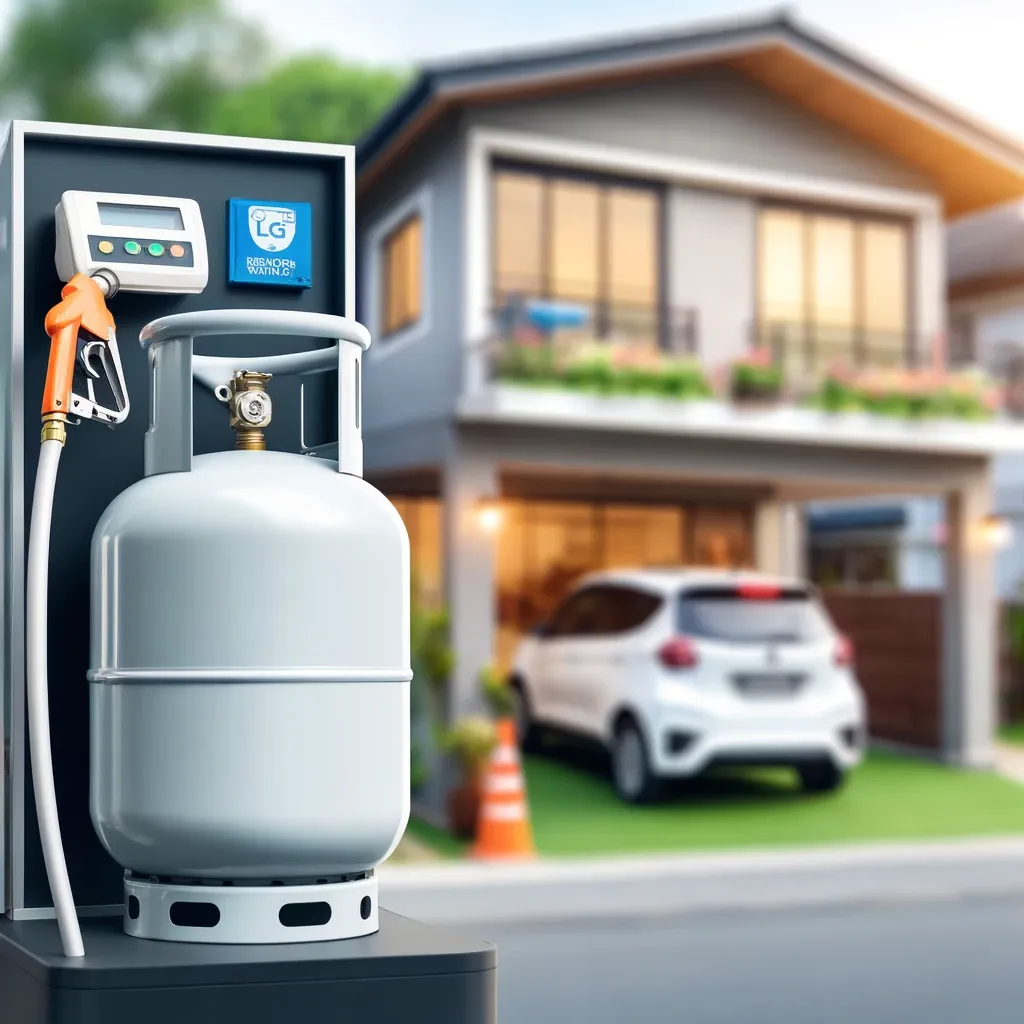Are you curious about how a household LPG charging station works? Wondering how it could change the way you manage gas at home? In this article, we’ll explore everything you need to know about household LPG gas charging systems, their benefits, and how they are revolutionizing residential energy management.
Household LPG Charging Station: Revolutionizing Home Energy Use
The idea of a household LPG charging station might sound like something out of the future, but it’s rapidly becoming a practical solution for homeowners who rely on liquefied petroleum gas (LPG) for heating, cooking, and powering appliances. Traditional methods of LPG delivery involve gas trucks coming to refill tanks, but with the growing demand for convenience and energy efficiency, household LPG charging stations have emerged as a modern alternative.
What is a Household LPG Charging Station?
A household LPG charging station is a compact, user-friendly device that allows homeowners to refill their LPG cylinders in the comfort of their own garages or homes. These stations are designed to work seamlessly with residential LPG systems, offering a practical solution for users who need quick and easy access to gas refills without relying on external delivery services.
Benefits of Household LPG Charging Stations
-
Convenience With a household LPG charging station, you no longer need to schedule gas deliveries or wait for delivery trucks. Simply charge your gas cylinder at home whenever you need it.
-
Cost-Efficiency Charging at home can often be cheaper than purchasing a pre-filled cylinder from external suppliers. This is particularly beneficial for households that consume large amounts of gas.
-
Safety Features Modern LPG charging stations come equipped with safety mechanisms to ensure that the gas is filled at the correct pressure, preventing over-filling and minimizing the risk of leaks.
-
Environmentally Friendly By reducing the need for gas delivery trucks, LPG charging stations contribute to lowering carbon emissions, making them a greener alternative to traditional delivery methods.
-
Improved Energy Management Homeowners have more control over their energy use, ensuring they only fill their cylinders when necessary, which can help manage household energy consumption more effectively.
How Household LPG Charging Stations Work
-
Installation The LPG charging station is installed in your garage or another suitable space within your home. It is connected to your existing LPG tank system, usually through a pipeline or compatible charging hose.
-
Refilling Process The homeowner attaches the empty LPG cylinder to the charging station. The system will automatically regulate the amount of gas being refilled, ensuring it’s safe and efficient.
-
Safety Protocols The station is equipped with sensors and valves that monitor the gas flow, preventing any accidental leakage or overfilling. These stations are built to meet strict safety standards and typically have automatic shut-off mechanisms.
👉 Learn more about Household LPG Charging Stations 👈
Household Gas Charging Station: A Convenient Alternative
Household gas charging stations offer a new level of autonomy and ease when it comes to managing gas for your home. These systems are particularly valuable for those living in remote areas where gas delivery might not always be reliable or timely.
How Does a Household Gas Charging Station Differ from Traditional LPG Solutions?
Traditional LPG solutions often involve getting refills from a gas delivery service. While convenient in some cases, this method can be cumbersome. The need to wait for a delivery truck and the higher costs associated with buying a pre-filled cylinder can be frustrating. With a household gas charging station, homeowners take control of the refilling process, saving time and money while enjoying the flexibility of refilling at their convenience.
Advantages of Household Gas Charging Stations
-
On-Demand Refills You can refill your gas cylinders anytime, which means you won’t run out of gas unexpectedly.
-
Time-Saving No more waiting for scheduled deliveries. Simply refill the cylinder yourself when needed.
-
Sustainability Reduced dependence on external suppliers means fewer transportation emissions, which makes household gas charging stations a greener choice for your home.
-
Space-Efficiency Modern stations are designed to be compact and unobtrusive, meaning they don’t take up much room in your garage or outdoor space.
-
Easy Maintenance These systems are designed to be low-maintenance, with long-lasting parts that require minimal upkeep.
👉 Learn more about Household Gas Charging Stations 👈
Household LPG Gas: Understanding Its Role in Modern Homes
LPG (liquefied petroleum gas) has long been used as a reliable and efficient energy source in homes around the world. But how exactly does it function, and why has it become such an important component in household energy systems?
What is Household LPG Gas?
Household LPG gas is a mixture of propane and butane, stored in liquid form under pressure. It is commonly used in homes for cooking, heating, and hot water systems. It is favored for its efficiency, portability, and reliability. Unlike natural gas, which is delivered through pipelines, LPG is stored in tanks and can be used in areas that don’t have access to a gas grid.
How Household LPG Gas is Used
-
Cooking LPG is commonly used for cooking on gas stoves and ovens. Its clean-burning properties make it ideal for indoor use.
-
Heating Many homes use LPG to power gas heaters, which can provide a more efficient and cost-effective heating option than electric heaters.
-
Hot Water Systems LPG is a popular choice for water heating, providing homeowners with a reliable source of hot water on demand.
Why Is Household LPG Gas So Popular?
-
Cost-Effective LPG tends to be cheaper than electricity in many regions, making it an economical option for homeowners.
-
Energy Efficiency LPG burns hotter and more efficiently than other fuels, making it a preferred choice for heating and cooking.
-
Flexibility Because it’s stored in portable tanks, LPG is not reliant on pipelines, offering homeowners flexibility in how and where they use gas in their homes.
👉 Learn more about Household LPG Gas 👈
Conclusion: The Future of Household LPG Charging
The rise of household LPG charging stations is a major leap forward in making gas usage in homes safer, more efficient, and environmentally friendly. As technology continues to evolve, these systems will become even more refined, offering homeowners greater control over their energy use and providing an alternative to the traditional, delivery-based model.
In the future, as more people embrace sustainable living, household gas solutions like LPG charging stations will play a vital role in the way we manage and consume energy at home.
Let’s keep an eye on these advancements – they promise to make our lives a lot more convenient and environmentally conscious.






